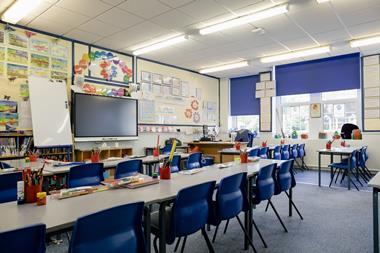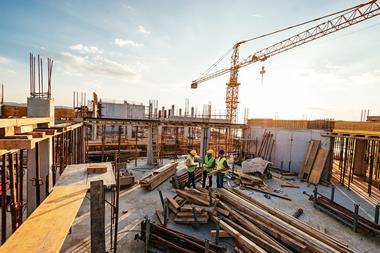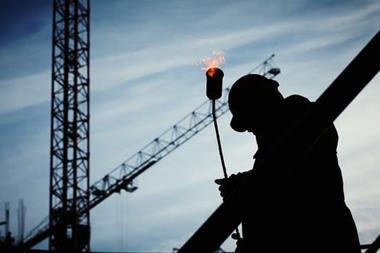Ade Adeyemo, UK Construction Practice Lead – Risk Consulting at RSA Insurance, explores how construction risks are evolving and how risk managers must adapt to manage them
How is construction risk evolving?
Ade Adeyemo, UK Construction Practice Lead – Risk Consulting at RSA Insurance: The most significant changes in construction risks that I am seeing are all related to the move towards low-carbon construction and net zero.

This isn’t unique though and is in line with many of their clients, contractors and insurers who also have their own internal and external targets for achieving significant reductions in carbon use and harm to the environment.
What this has meant for construction, is a much greater focus on the increased use of new materials or innovative use of existing materials and newer processes.
”The biggest changes have been in off-site construction, modularisation and the re-use of construction components and materials”
One of the big issues, where there is a lot of focus, has been on the use of mass timber in construction and its aesthetic and environmental benefits.
However despite this, from a risk perspective, combustibility remains a serious concern for insurers. Buildings with wooden materials are unfortunately at an increased risk of a fire. Increased risk management measures are needed when timber is used.
Water damage during construction is also a risk, it is very important that timber famed buildings are made weather-tight in the shortest time possible. Slow leaks from pipes can cause considerable damage and the timber must not be damp otherwise mould, woodworm and death watch beetle can cause significant decay.
However, the biggest changes have been in off-site construction, modularisation and the re-use of construction components and materials.
What does it mean for risk managers?
Adeyemo: How organisations deal with the management of change has always been a major aspect of the work that risk engineers do. Bridging the gap between past knowledge and future performance is the major challenge as we assess future trends.
”Risk managers will be called upon even more to help organisations to focus on controlling or mitigating the risks that affect their business”
Poor management of change tends to go hand in hand with uncertainty, loss of control and increased risk. Conversely, change and innovation can also be positive, leading to opportunities.
Risk managers will be called upon even more to help organisations to focus on controlling or mitigating the risks that affect their business, allowing the potential benefits of innovation to be realised.
Such change can be somewhat at odds with insurance practice, which relies on historical and statistical information to predict future trends and performance.
What steps can risk managers take to mitigate or transfer key risks?
Adeyemo: With all new technologies, there is always a steep learning curve and risk managers do not have the benefit of past experience, which enables them to predict how materials and construction systems will perform, during construction, and in the long term.
Risk managers are used to dealing with such situations. Typically, going back to first principles enables us to reasonably predict how such innovations might behave. However, it is not an exact science and underwriters tend to prefer certainty, which is why they are more comfortable writing traditional methods of construction.
As we embrace these new technologies, materials, and ways of working, risk managers will play a crucial role in risk mitigation. That will be a great demand from underwriters for technical appraisals ‘pre-quote’.
”Risk engineers are uniquely placed to help achieve the aims of both the construction and insurance industries, helping to improve knowledge and reducing uncertainty about the future.”
Education will also be crucial and everyone in the risk business will have to adapt quickly to the changes facing us. Technology is advancing at a rapid pace and understanding of modern systems of construction, coupled with the use of artificial intelligence and big data, will determine who can take advantage of this.
Risk engineers are uniquely placed to help achieve the aims of both the construction and insurance industries, helping to improve knowledge and reducing uncertainty about the future.
Groups such as the RISCAuthority, IMIA (the International Association of Engineering Insurers) and the Construction Insurance Risk Engineers Group (CIREG) are at the forefront of the push for better understanding of construction risks, whilst challenging both the construction and insurance industries to improve ways of working and reduce risks to as low as reasonably practicable.




















No comments yet